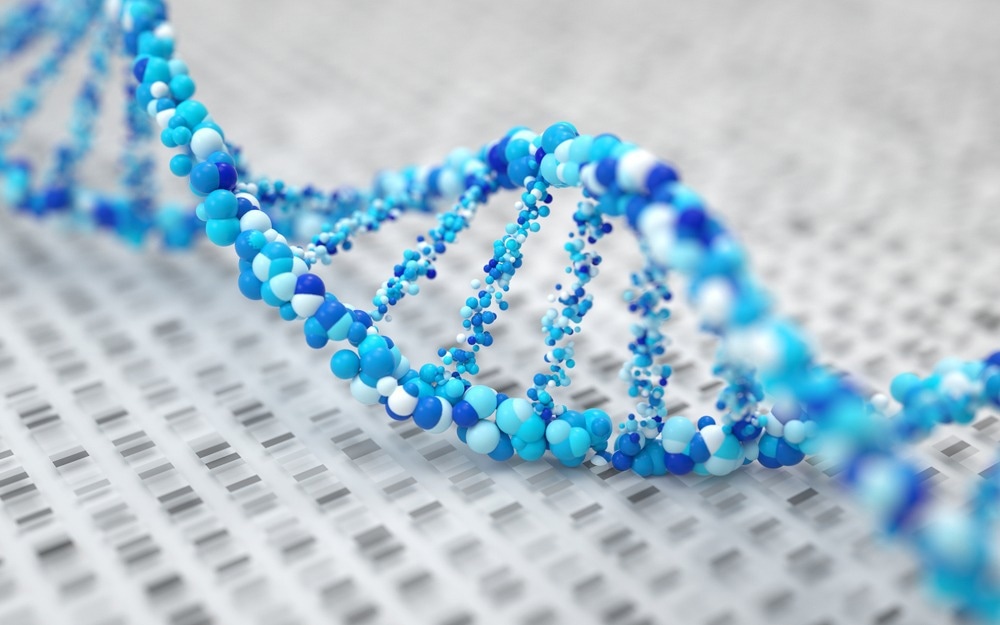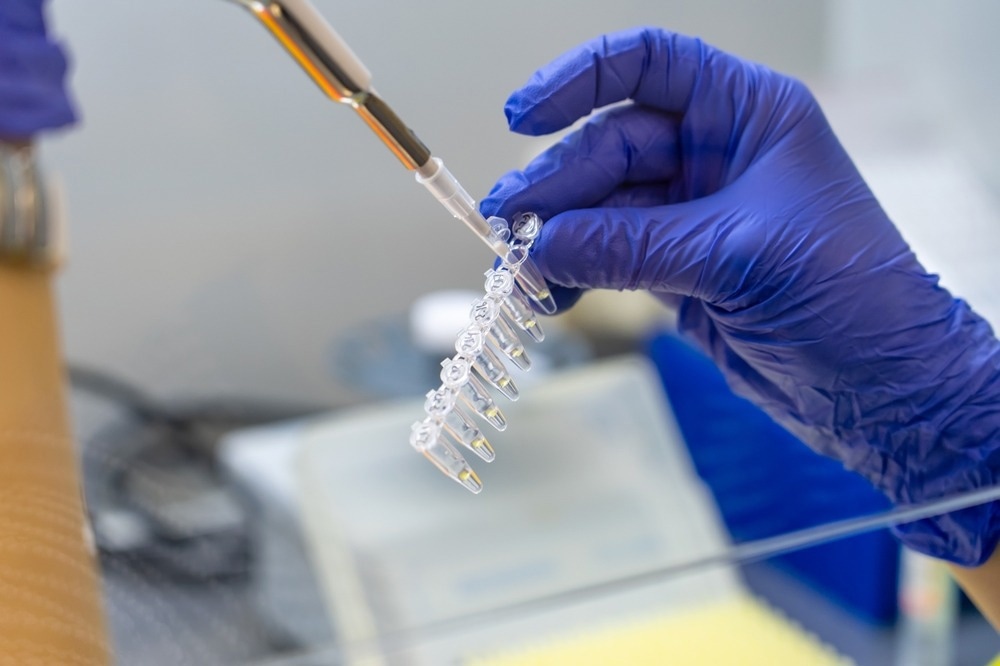DNA sequencing is a method that determines the order of the four nucleotide bases, namely, adenine (A), thymine (T), guanine (G), and cytosine (C), that form a DNA molecule. In this article, AZoLifeSciences offers a comprehensive guide to DNA Sequencers.

Image Credit: Blue Andy/Shutterstock.com
In a DNA double helix, nucleotide bases form specific bonds, i.e., A pairs with T and G pairs with C. DNA sequencers enable sequencing of the whole genome or sequence of interest. Since DNA consists of heritable genetic information, detecting and analyzing changes in an organism’s DNA is the foundation for molecular diagnostics for multiple diseases and biological phenomena.
History of DNA Sequencing Technology
In 1972, Paul Berg developed the first technology that enabled the isolation of specific DNA fragments. Complete sequencing of a bacteriophage DNA was first performed by Frederick Sanger in 1977. This DNA sequencing method was based on chain-terminating inhibitors. During the same period, another DNA sequencing technique was developed by Walter Gilbert based on the chemical degradation method.
The first semi-automated DNA sequencer was developed by Leroy Good at the California Institute of Technology in 1986. This DNA sequencer gained popularity and was used for mapping and sequencing genetic materials. In 1987, Applied Biosystems, an American company, launched the first commercial automated DNA sequencers called ABI370.
Types of DNA Sequencers and Their Evolution
Over time, scientists and manufacturers have developed different DNA sequencing techniques to meet consumer demand. Technological advancements have reduced the sequencing time and cost significantly. Examples of DNA sequencers are discussed below:
First Generation DNA Sequencers
The first-generation DNA sequencers generated genomic reads of less than one kilobase (kb) in length. To analyze longer DNA fragments, researchers used the short-gun technique, where overlapping DNA fragments were separately cloned and sequenced before being assembled into one long contiguous sequence.
Gradual advancements, such as the development of recombinant DNA technologies and polymerase chain reaction (PCR), improved genomic sequencing. This is because these technologies provide means to produce high concentrations of pure DNA species, which are required for sequencing.
The development of newer dideoxy sequencers, such as the ABI PRISM range manufactured by Applied Biosystems, allowed the simultaneous sequencing of hundreds of samples. This technique was used in the Human Genome Project.
Second Generation DNA Sequencers
Along with the advancements of large-scale dideoxy sequencing efforts, scientists developed next-generation DNA sequencers that significantly differed from their predecessors. Unlike the dideoxy sequencers that required radio- or fluorescently-labeled deoxynucleotide triphosphates (dNTPs) or oligonucleotides before visualizing with electrophoresis, the second-generation DNA sequencer is based on a luminescent method for measuring pyrophosphate synthesis.
The second-generation DNA sequencer is based on the pyrosequencing technique that uses ATP sulfurylase to convert pyrophosphate into ATP, which acts as a substrate for luciferase. Subsequently, light, which is directly proportional to the amount of pyrophosphate, is generated and measured.
Both Sanger's dideoxy and pyrosequencing methods are ‘sequence-by-synthesis’ (SBS) techniques that require DNA polymerase to produce the observable output. The pyrosequencing technique has been pioneered by Pål Nyrén, a Swedish scientist, and colleagues at the Royal Institute of Technology, Stockholm.
This pyrosequencing technique was later licensed to 454 Life Sciences, a US-based biotechnology company. This company first commercialized a successful ‘next-generation sequencing’ (NGS) technology. Compared to Sanger's dideoxy sequencers, NGS sequencers are faster and more cost-effective.
GS 20 was the first high-throughput sequencing (HTS) machine, followed by 454 GS FLX, offering a greater number of reads. The Solexa sequencers were later acquired by Illumina and were a popular NGS sequencer. Illumina continued to improve this technology and launched the HiSeq sequencer machine, followed by the MiSeq machine. Ion Torrent by Thermo Fisher is also a promising second-generation sequencing platform that offers rapid output.

Image Credit: sommthink/Shutterstock.com
Third-generation DNA Sequencing
Third-generation DNA sequencing technology is capable of sequencing single molecules, eliminating the need for DNA amplification shared by all other sequencing technologies. Helicos BioSciences first commercialized this technology. Although this technique is slower and more expensive than NGS sequencers, it is the first to sequence non-amplified DNA reducing biases and errors.
The single-molecule real-time (SMRT) platform from Pacific Biosciences is a widely used third-generation technology, which is available on the PacBio range of machines. Nevertheless, PacBio machines are unable to perform long reads exceeding 10 kb in length. However, reads longer than 10 kb are the ones that are beneficial for de novo genome assemblies.
Oxford Nanopore Technologies (ONT) is the first company that offers nanopore sequencers, such as GridION and MinION. The MinION machine is compact and provides rapid outputs, presenting the opportunity for decentralized sequencing.
Applications of DNA Sequencer
In the biotechnology industry, DNA sequencers are used to conduct research related to the genetics of individuals, plants, organisms, and animals. Advancements in DNA sequencers have enabled the sequencing of an entire genome, for about $1000, in less than a day.
At present, several DNA sequencers are available in the market. For instance, the Pacific Biosciences sequencer can sequence long regions of DNA from a single DNA strand. Owing to the popularity of DNA sequencers, many genome projects are being undertaken, and an enormous amount of amino acid or nucleotide sequences are available in public databases, such as GenBank, and EMBL.
Currently, Sanger sequencing is mostly performed for de novo initial sequencing of DNA molecules. This sequencer is mainly used to obtain the primary sequence data for an organism or gene. This technique is also used to validate the results of HTS. HTS is used to study single-nucleotide polymorphisms, which is crucial to detect mutated genes related to a disease. In addition, these sequencers play an important role in evolutionary biological research. HTS is also used in tumor and cancer studies.
How to sequence the human genome - Mark J. Kiel
How to sequence the human genome - Mark J. Kiel. Video Credit: TED-eD/YouTube.com
Further, HTS helps detect the causes of rare genetic disorders. Analysis of the exome sequence, which consists of all expressed genes of an organism, was found to be an effective method in identifying the causal alleles for many inherited illnesses. Sequencing of the breast cancer genome enabled the detection of two genes, namely, BRCA1 and BRCA2, whose pathogenic variants significantly enhanced the possibility of developing breast cancer. Many times, individuals with pathogenic alleles are recommended double mastectomies.
DNA sequencing provides insights into the regulatory factors within the genome of every cell. It also helps elucidate the impact of variation of these factors on different cell types and individuals. Forensic scientists commonly use DNA sequencers to study the genetic material collected from crime scenes.
Future Goals of Scientists and Manufacturers of DNA Sequencers
There are many established and start-up companies around the world that manufacture DNA sequencers. Currently, many companies have focussed on reducing the cost of genome sequencing and meeting the demands of consumers.
Miniaturization of DNA sequencers for personal use is one of the major goals of scientists and manufacturers. This development is a multidisciplinary task that involves microfluidic devices, signal acquisition, nanoprobes, and data analysis. Some of the existing small and portable DNA sequencers are MinION and SmidgION. These designs have indicated the possibility of developing a new miniaturized device with large-scale applications. In this context, scientists have recently developed micro/nanoelectronics, which was combined with a newly designed application-specific integrated circuit (ASIC) driver coupled to a heterostructure laser diode.
The dimensions of both the signal acquisition and data analysis circuits can be further reduced in the future. In addition, the performance of this miniaturized device could be improved by addressing the current limitations of sequencing accuracy, portable algorithms, and easy operation. Scientists are optimistic that they can soon develop and launch miniaturized DNA sequencers for personal use.
Illumina, the largest developer of DNA sequencers, has recently launched the NovaSeq X series platform. Thermo Fisher Scientific has also manufactured many important DNA sequencers, such as the Oncomine Dx Target Test, which received approval from the Food and Drug Administration (FDA).
This device is the first NGS-based diagnostic used for therapy selection for patients with RET mutations/fusions in thyroid cancers. Other manufacturers of different types of DNA sequencers are Agilent Technologies, QIAGEN, BGI Genomics, and Oxford Nanopore.
References and Further Reading
DNA Sequencing Technologies–History and Overview. (2023) [Online] Thermo Fisher Scientific. Available at: https://www.thermofisher.com/uk/en/home/life-science/cloning/cloning-learning-center/invitrogen-school-of-molecular-biology/next-generation-sequencing/dna-sequencing-history.html.
Carpenter, F. (2022) The Top 5 Genome Sequencing Companies by Revenue. [Online] BioSpace.com. Available at: https://www.biospace.com/article/top-10-gene-sequencing-companies-by-revenue/.
Sharman, S. (2021) The Evolution of DNA Sequencing Technology. [Online] HudsonAlpha. Available at: https://www.hudsonalpha.org/evolution-of-dna-sequencing-part-1/.
Huo, W. et al. (2021) Miniaturized DNA Sequencers for Personal Use: Unreachable Dreams or Achievable Goals. Frontiers in Nanotechnology, 3. https://www.frontiersin.org/articles/10.3389/fnano.2021.628861/full
DNA Sequencing Fact Sheet. (2020) [Online] National Human Genome Research Institute. Available at: https://www.genome.gov/about-genomics/fact-sheets/DNA-Sequencing-Fact-Sheet.
Mardis, E. R. (2017) DNA sequencing technologies: 2006–2016. Nature protocols, 12(2), pp. 213–218. https://www.nature.com/articles/nprot.2016.182
Heather, J.M. and Chain, B. (2016) The sequence of sequencers: The history of sequencing DNA. Genomics. 107(1), pp.1-8. https://www.ncbi.nlm.nih.gov/pmc/articles/PMC4727787/
Adams, U.J. et al. (2008) DNA Sequencing Technologies. [Online] Nature Education. Available at: https://www.nature.com/scitable/topicpage/dna-sequencing-technologies-690/.
Last Updated: Jun 6, 2023